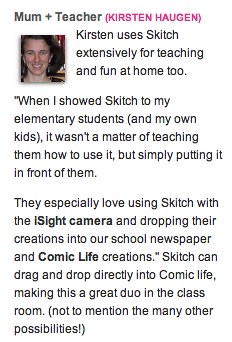Intercultural Dimensions of Task-based Learning for Authentic Communication
Part I: Rationale
A paper presented at the inaugural international meeting of ACE (Asian Conference on Education), October 24-25, Osaka Ramada Hotel, Osaka, Japan
Sponsored by the International Academic Forum
Link the ACE 2009 Conference: http://ace.iafor.org/
The second part of the paper, Multicultural Inculturization: Instructional Practice can be read in the next entry in this blog (see below).
Abstract: An important challenge for language educators in Asia is the difficulty of getting students to actually produce the language they are learning for purposes of authentic communication. This papers advocates an approach that is rigorous, long-term, cross-cultural, and, most definitely, qualitative in nature. A new intercultural framework for teaching methodologies and student learning for constructing instructional environments conducive to developing intercultural competencies is the focus of a task-based learning approach through collaboration.
Keywords: TEFL, intercultural, approach, metacognition, task-based learning
A central challenge for foreign language educators is getting students to actually produce, in particular to speak, the target language – that is, to be able and willing to use English, as it still remains the foreign language predominantly studied in Japan, they have learned for purposes of authentic communication, self-expression, and personal enjoyment. Achieving this goal becomes even more difficult when the students are from a country where the culture norms for speaking behaviors are quite different – even radically so – from the native-speaker teacher’s home country. This paper addresses the most essential aspects of this important educational goal, which is both vexing and challenging to overcome for many language educators who come from English-speaking or European nations to teach in Asia.
By expanding teacher and learner recognition of the nature of intercultural barriers to classroom learning of a foreign language, and by gaining a deeper understanding of the problem’s pertinent issues, a new collaborative framework for teaching and learning methodologies using this cross-cultural knowledge and employing intercultural competency for teachers and students alike can become a reality. Engaging educators in constructing instructional environments in Japan and across Asia with the fruits of this realization will result in school and university programs that are more conducive to the development of the cross-cultural competencies needed by all stakeholders in the educational process. By focusing on task-based EFL learning through intercultural collaboration as a vehicle for achieving this goal, the author hopes to ‘forge a new plow’ that can cross divided, and sometimes scorched, territories and cultivate a more responsive educational system for language education, leading Japanese and other Asian students to become more competent intercultural communicators, and gaining greater confidence as future leaders in a world that is vastly changed from the days of the Cold War race of a few superpowers.
The Pacific-Asian Region, where Japan has, heretofore, taken one of the lead roles, has quickly come into its own as a dominant force in the world’s global economy and international political arena. Therefore, Asian countries must increasingly learn more effectively and competently how to deal with balancing the adoption of languages, cultures, educational values and processes from abroad, particularly from the Western nations, with the preservation of their own values, cultures and languages.
This monumental realization can only be scratched at the surface, so this investigation focuses broadly on the following educational tenets and actual instructional practices for establishing an intercultural approach to task-based learning:
1. Selling the intercultural collaborative task-based approach to reluctant speakers is the essential initial step.
2. Guidelines for electing, organizing, and managing authentic tasks and meaningful performances for large classroom groups will be introduced.
3. Preparing students for success in the performances involves effectively ‘training’ students unaccustomed to a intercultural task-based approach to gain the strategies, skills and confidence needed, both meta-cognitively and through actual instructional tasks.
A second follow-up paper in preparation will address the subsequent steps in this process:
4. Setting standards, selecting new methods for evaluation, and then incorporating self, peer and teacher assessment into the performance tasks are important parts of the process.
5. A brief demonstration of appropriate type of performance tasks and guidelines for maximizing student achievement and teacher efficacy will be discussed. These include model conversations, role-plays, simulations, poster talks, storytelling, action research presentations, pair discussions, group debate, making video programs, speeches, dramatizations, and Internet-based collaborations.
6. Technology and classroom infrastructure, which enhance the instructional environment in achieving a task-based collaborative approach, will be briefly showcased.
The target audience is comprised of educational policy-makers, system administrators, institutional leaders, and practicing foreign language teachers, whose students in secondary schools and university are not yet accustomed to being asked to become actively engaged in the process of learning by ‘doing.’. It may also be valuable for anyone who wants to learn more intercultural knowledge and meta-skills take shape in, and also be shaped by, the educational process.

